The First Day of Grade One
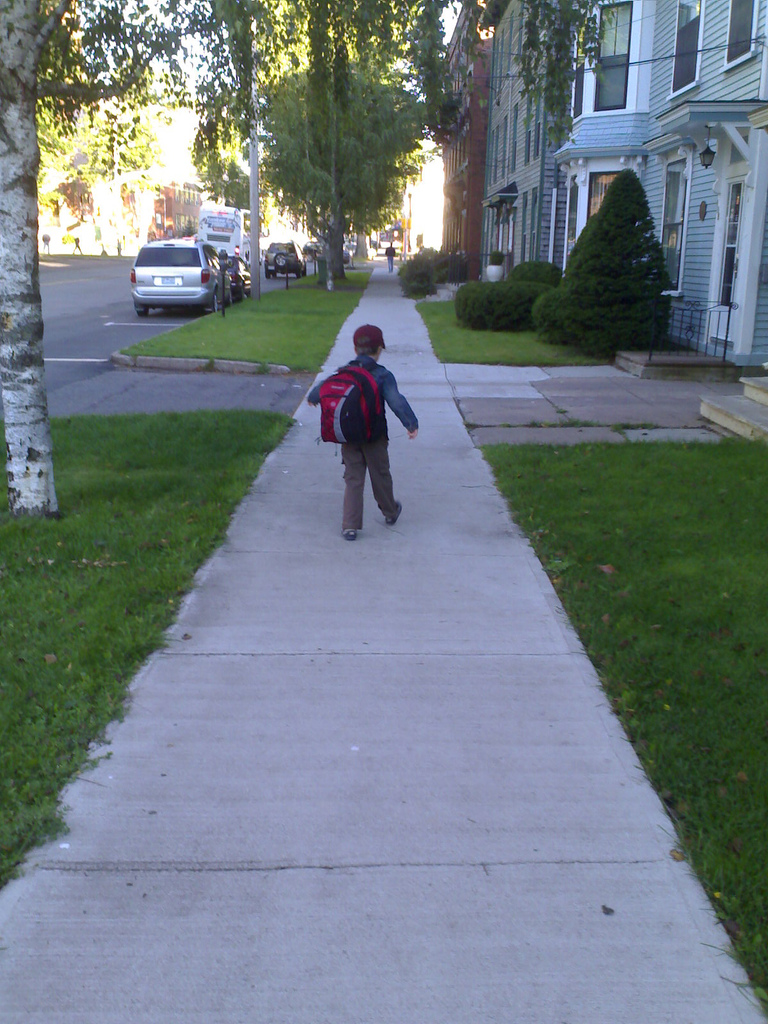
The Last Day of Grade Six
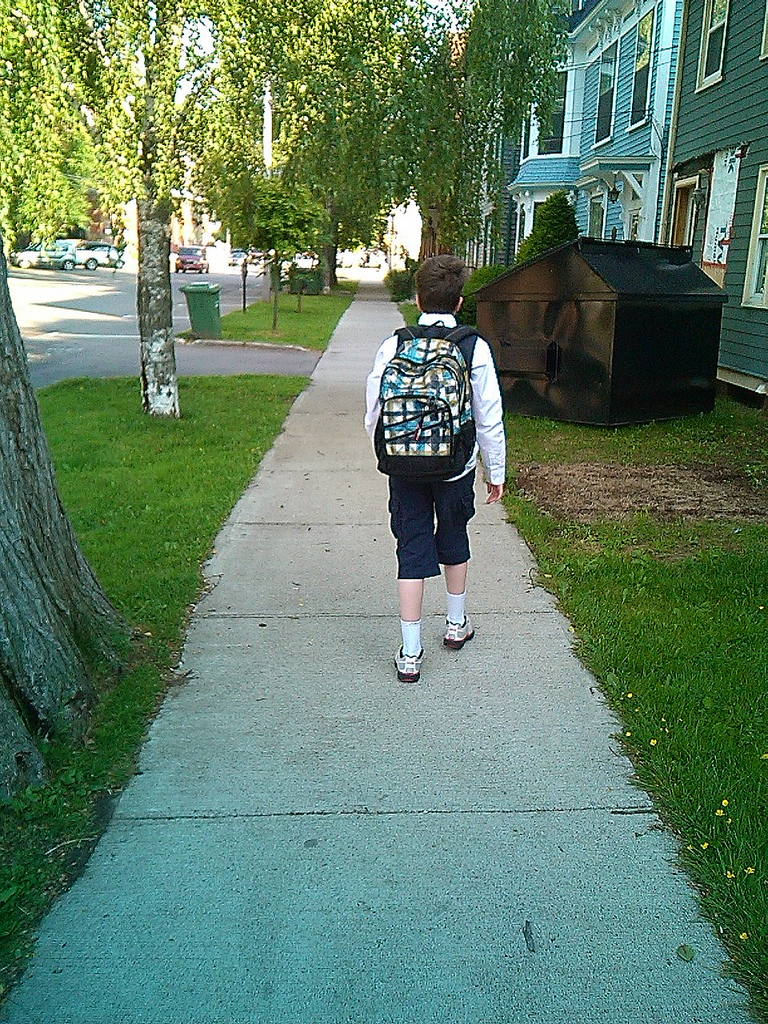
I spent this morning being trained to use an Objet30 Desktop 3D printer up in the nascent fablab in the Engineering Department at the University of PEI.
Remember last week when it was announced that an “old line” 3D printer company called Stratasys was going to purchase the “young upstart” 3D printer company Makerbot? Well one of Stratasys’s projects is the Objet30, and as of today there’s one set up and running on the 3rd floor of Dalton Hall at UPEI.
Andy Trivett, Chair of Engineering at UPEI, has been spearheading an effort to create a Fablab at the university, and in addition to acquiring equipment – 3D printers, a laser cutter/engraver, a CNC milling machine – he’s been working hard to involve the university community and the community at large in the effort, with hopes that it will become a broadly-used laboratory for making and experimenting.
The Objet30 is complex enough that the dealer – Javelin from Halifax – insists on sending over a technician for a familiarization exercise, and that’s what I attended this morning, along with a motley collection of people from the university community.
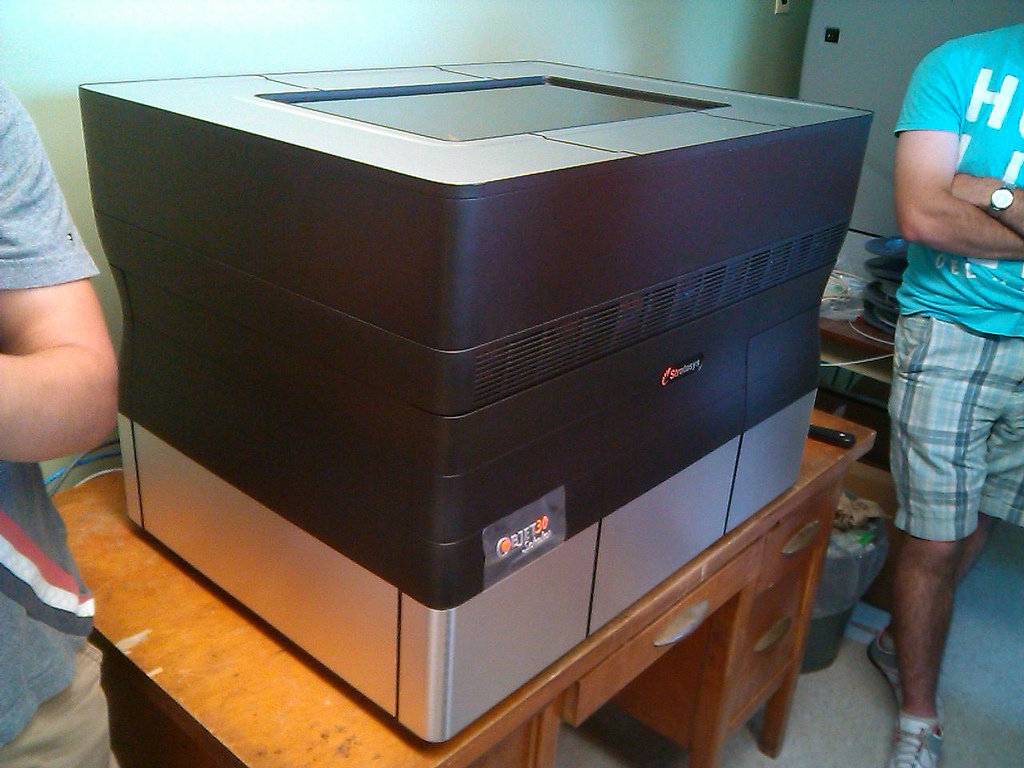
The Objet30 is quite different from the consumer 3D printers that are becoming popular (and cheap) these days: it uses (rather expensive; ballpark is $7/square inch) photo-polymer liquid to “print” in much the same way an inkjet printer prints, albeit with a third axis to allow it to print in 3D, and with a second “support material” jet to allow it to print material that will later wash away but that can support overhangs and other complex bits.
The 3D objects that the machine can produce seem awfully impressive, and lack the “jagginess” that you might be used to if you’ve seen the projects of printers with lower resolution.
What’s unclear to me at this point is whether the cost and complexity of the Objet30 will be worth it for everyday hacking around; fortunately now that UPEI is host to (at least) three 3D printers (the Objet30 and a uPrint in the Fablab and the Ditto in Robertson Library) it’s possible to contrast and compare.
If you’re interesting in “making” and would like to participate in getting the UPEI Fablab up and running, I encourage you to drop Andy a line, he’s very approachable, very committed to this not being a “university only” lab, and a man full of advice and eager to try new projects to boot.
As you will know if you follow me on Twitter, from a series of alternately mournful and celebratory tweets of late, the musical Anne & Gilbert is running in The Guild this summer. And by “in The Guild” I mean “in the theatre that is 6 inches on the other side of the wall directly in front of where I sit and work every day.”
We learned that Anne & Gilbert would be moving in back when there was still snow on the ground, so we’ve had a lot of time to dwell on the implications of sharing a tiny space with effervescent singers and dancers professing Anne’s love for Gilbert daily. All we really had to go on when pondering what it would be like was our experiences last spring when the Holland College Performing Arts showcase was held in the theatre and we were subjected to entertained by endless iterations of Queen songs rehearsed by a impossibly keen bunch of triple threats.
So, let’s just say there was some dread.
All the more so because, despite numerous career turns that have seen me employed in the “Anne” industry (promoter of Anne on www.gov.pe.ca, drafter of business plan for Avonlea Village, procurer of Anne-themed preserves for the Anne of Green Gables Store, purchaser of Belmont school house for aforementioned Avonlea Village, etc.), I’ve never completely bought into the idea of celebrating Anne through singing and dancing and carrying on.
There’s a solid novel underneath it all, a story that I am happy to have my adoptive province hang its tourism hat on. But I only lasted through half of the other Anne of Green Gables musical before I had to leave from the sheer frivol of it all. And all I knew of Anne & Gilbert was Oliver – perhaps the Island’s biggest fan of Anne musicals, as it ironically turns out – belting out “You’re Island, You’re Island, You’re Island through and through” for several weeks after returning from the old Summerside-based production.
Now that we’re a week in to a season of 134 performances – 8 shows a week from now until October – I am happy to report that all the dread was for naught.
Well, okay, not exactly naught.
That “You’re Island” song still drives me bonkers.
And it is slightly distracting to have your office break out in applause every 5 minutes (although, if you’re distracted and forget where you are, it can enliven the soul too).
And there are a couple of numbers where it seems (I haven’t seen the show yet, so I’m guessing) the entire cast is jumping up and down, an act that makes the building shake.
But, otherwise, it’s really all quite delightful.
It turns out that I’m actually quite keen on many of the musical numbers. Indeed I can sing lines from many of them by heart now, and, as Oliver can attest, have been known to belt out “Anne of Green Gables loves Gilbert” at the top of my lungs while driving around town.
And, above anything else, there’s a tremendous energy in the building. The staff at The Guild have a new sense of purpose. And there are happy people singing and dancing and carrying on every day. Which turns out to make not for an oppressive workplace but for a more creative one.
At least that’s the theory so far.
Anne’s presence in our midst has had additional implications, as the basement space where my Golding Jobber No. 8 letterpress is based has been transformed from a seldom-used arts education and screen printing studio into an oft-used costume shop and dressing room for the show. Where once was a pressure washer for cleaning screens, there is now washer and dryer to launder the costumes; where once children’s art supplies stood you will now find wigs and suspenders and leather shoes.
To the enormous credit of The Guild, I wasn’t evicted: the letterpress still has its little corner, with enough space cleared around it to allow me to work.
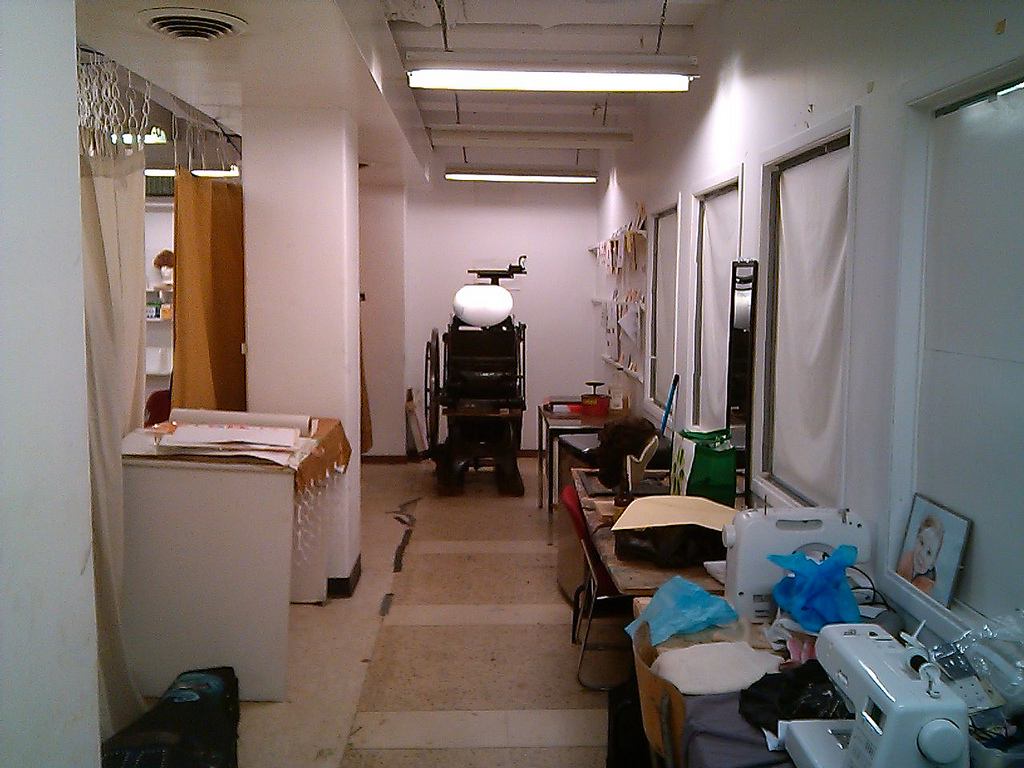
What’s been restricted, however, is the time available for me to do so. Running a 97 year old, one ton iron machine is incompatible with the needs of Anne and Gilbert switching costumes, so I have to squeeze in printing time around the showtimes (yes, there’s an app for that). But even in that there is a silver lining, as having only a very few times during the week where I can print, instead of “any old time,” turns out to be the call to action I need to get me back into the shop.
So, at least at this hour, with a few weeks done and more than 3 months to go, living with Anne of Green Gables turns out to be a turn for the better, not an occasion for despair.
(And you should really come and see the show; I’ve not seen it myself, as I said, but I’ve heard it more than anyone outside of the cast, and it’s impressive!)
On Sunday afternoon I was sitting at the front table at Casa Mia Café here in Charlottetown eating lunch. As I have many times before, I watched new customers walk in the front door, stop, and, looking confused, wonder what they should do. Should they sit down? Wait to be seated? Order at the counter? At various times of the day for various customers Casa Mia supports all of these. Which doesn’t make it any easier if you’re new in down and looking for a sandwich.
So I sent my friend Mehrnoosh, co-owner of Casa Mia, an email:
Sitting at the front of Casa Mia and watching how many new customers get confused, I recommend a sign on the podium:
Please Take a Seat!
(For take-out, feel free to order at the counter)Or something to that effect.
This afternoon, walking by Casa Mia on my way uptown, I noticed this:
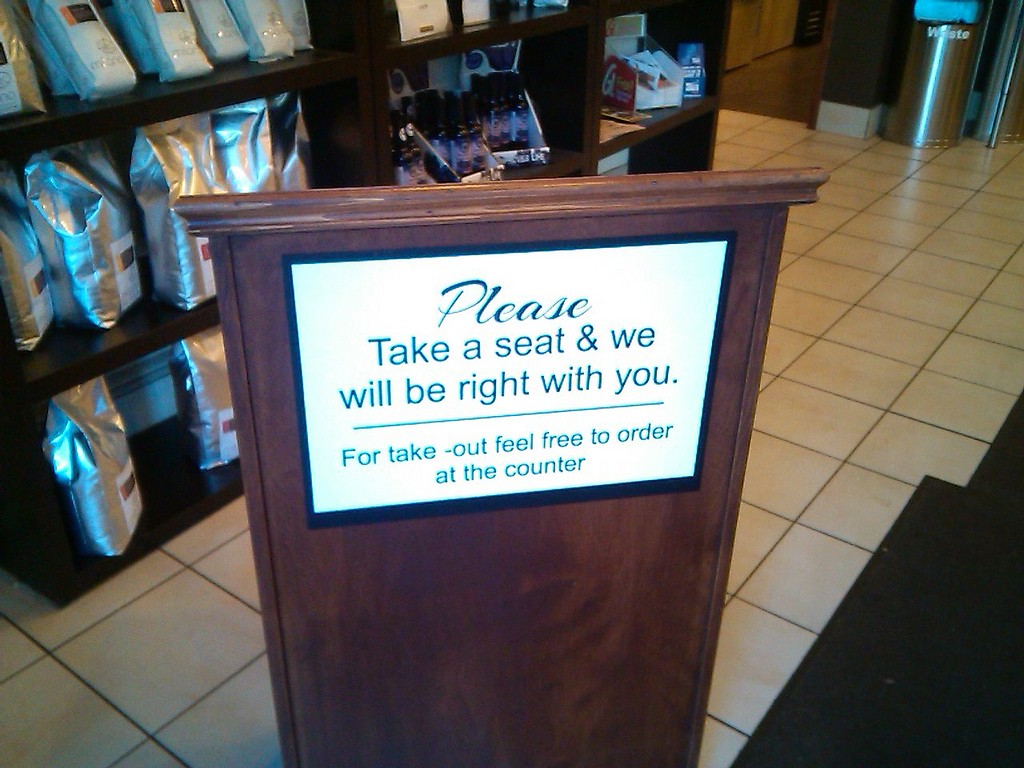
Okay, so there’s an extra space between “take” and “-out” and there should be a comma between “take-out” and “feel free” – but there was a sign! In less than 24 hours! Behold my awesome consumer power!
What have you recommended to your coffee shop today?
I ran into my friend Susan this morning at Casa Mia Café and she mentioned that she and her husband Perry (reference) are making a list of things they want to do this summer.
This strikes me as an excellent idea: in previous summers (we’ve had 20 of them so far on Prince Edward Island) it always seems like Labour Day before I realize that it’s summer. And then the leaves are falling off the trees. And then it’s Christmas.
So remembering that it’s summer, that summer is finite (especially here), and that I happen to live in an Island paradise is a good idea. Note to self.
So far, we’re off to a good start, as it happens.
Last week was the second of four birthday agglomerations in our family (the first is in April, the second in October, the third in November). There were three family birthdays last week, and more than a few birthdays in my collection of friends near and far.
By way of celebrating Catherine’s birthday we headed out to The Dunes for supper midweek and had what turned out to be an excellent meal. The highlight was an appetizer they call “The Grazing,” which was, as it turned out, almost enough to feed all three of us for the night: sausage, olives, spiced almonds, salad, roasted onion jam, fresh bread and more. It was the kind of dish that makes Catherine swoon, so, only by coincidence and not by plan, the perfect dish to celebrate her birthday.
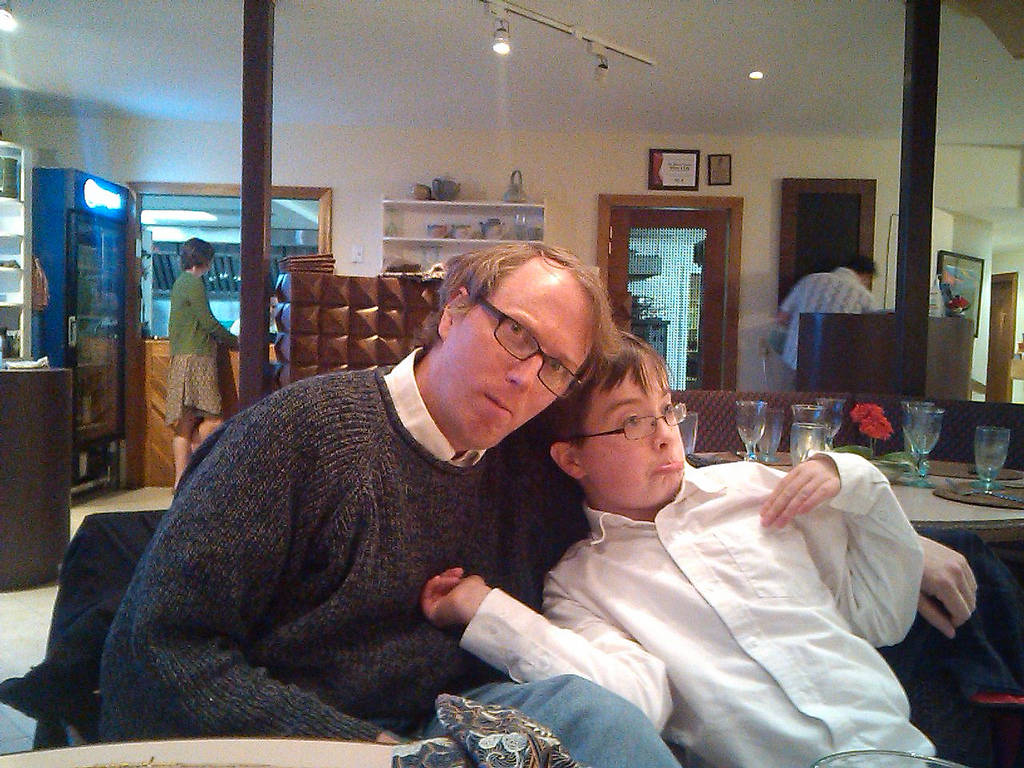
On Saturday night Catherine needed to work, so Oliver and I headed out to Covehead to Richard’s Fish & Chips (one of Catherine’s favourite places so, as you might imagine, she felt left out upon hearing this). Although I’ve been to Richard’s many times I never actually had the fish & chips itself until this visit: it turns out to be a tour de force. A large piece of well-cooked fish served over a bed of well-cooked fries and accompanied by a generous portion of homemade tarter sauce. That we enjoyed this with the third-floor deck almost all to ourselves as the sun was setting made it all the more excellent.
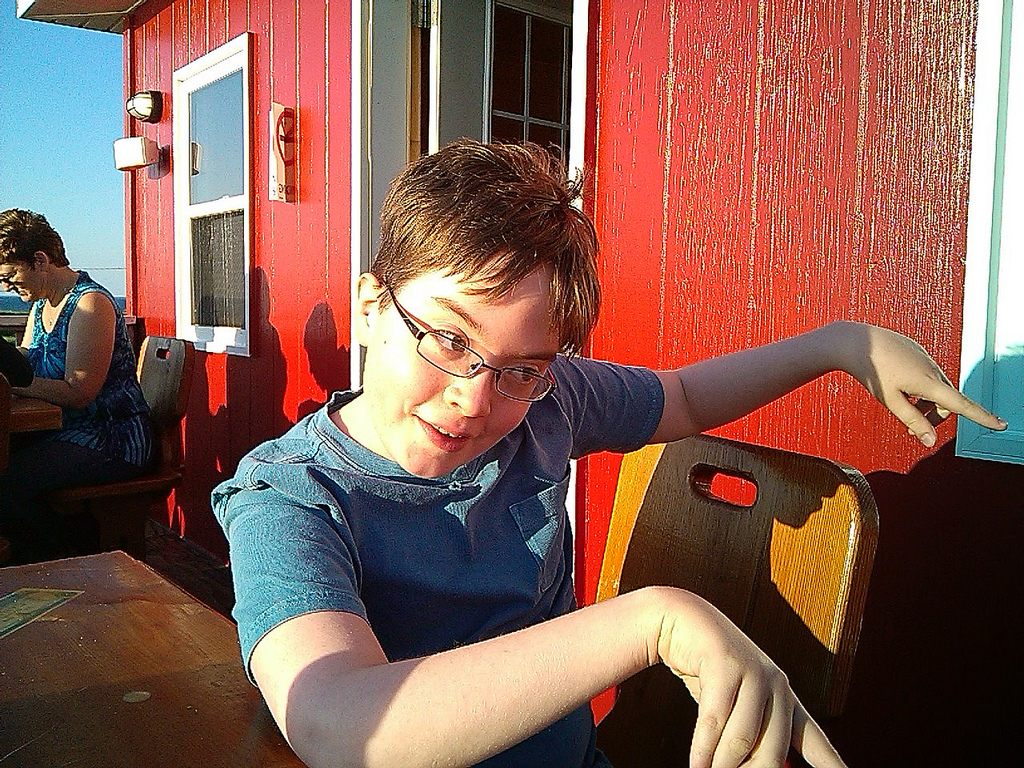
After fish & chips we headed to Brackley Drive-in (disclaimer: a longtime client) for Monster’s University, which we enjoyed with almost perfect drive-in weather under a bright full Moon.
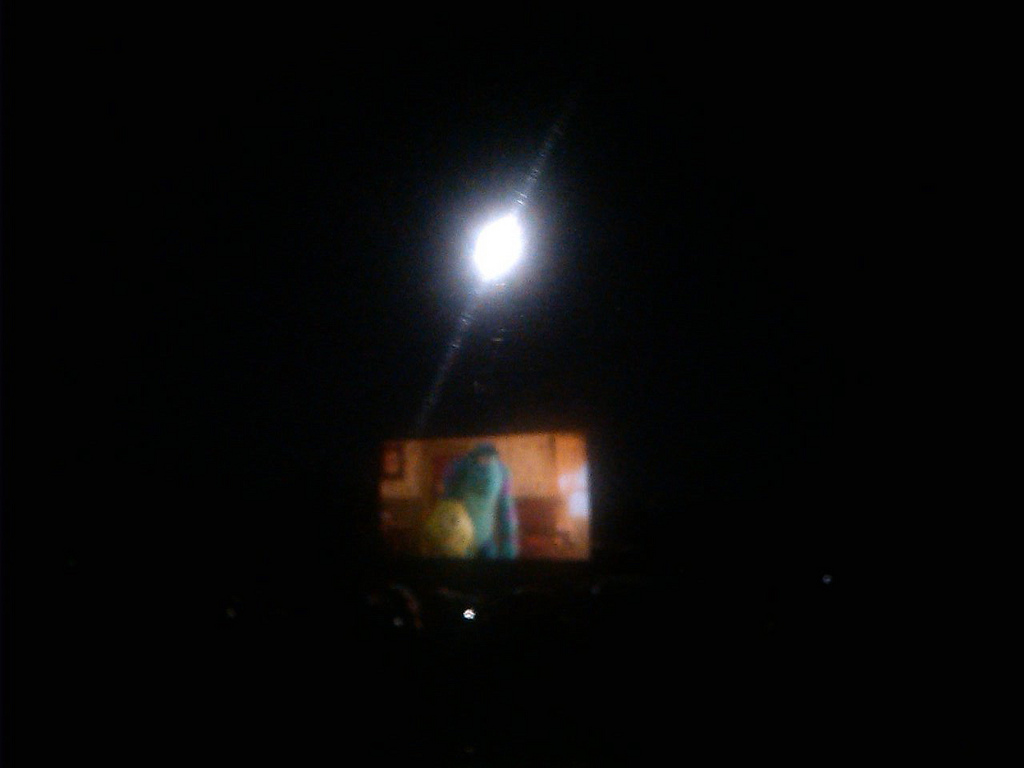
A good start to summer, I think, and a good reminder to not forget to do more before summer’s over.
The School Calendar for 2013-2014 has just been released and I’ve again taken the official Prince Edward Island School Calendar and updated a set of public calendar files to make it easier for parents and others to shunt the information around their digital devices. Here you go:
(Note for those of you who already had the 2012-2013 School Calendar integrated into your digital devices: you don’t need to do anything, as those addresses haven’t changed from last year).
As a member of the School Calendar Committee for the PEI Home and School Federation I’ve asked to have the official calendar released as structured data by the Department of Education and Early Childhood Development itself, but as yet this hasn’t happened.
Journalist Sonny Motké interviewed Richard Homburg for Quote magazine. The article summarizing the interview, Richard Homburg: ‘Nieuw management Homburg Invest pleegde een coup’ is in Dutch, so I ran it through both Bing’s and Google’s translator.
Bing has a much more colourful take of the first paragraph:
He was almost two years out of reach for an interview, but after many try took Richard Homburg then finally the phone on. And he told in scents and colors his view of the demasqué of Homburg Invest. In so doing, does he get fucked hard out to his successors: “they have screwed up the whole thing and now I believe it is all nothing more valuable.”
Google is considerable more sedate:
He was almost two years unattainable for an interview, but after much trying finally took Richard Homburg over the phone. And he told scents and colors his vision of the unmasking of Homburg Invest. In addition, he gets rock hard out to his successors: “They screwed up the whole thing and now I think it is all worth nothing.”
For some reason machine translation, in my experience, can almost never make Dutch-translated-to-English sound anything other than slightly bonkers; perhaps it’s an overly complicated language?
I received an automated email this morning from Robertson Library:
Dear Peter Rukavina,
Our records indicate these items are due in 3 days:
Please return or renew this material before fines accumulate.
Note that laptops and other reserve items cannot be renewed.
You may renew your material in one of 3 ways:
- online with your "My Account" page
(https://islandpines.roblib.upei.ca/opac/en-CA/skin/roblib/xml/myopac.xml?ol=4&l=4&d=2)
- by phoning 902-566-0583
- by replying to this email circdesk@upei.ca
Thank You.
How we decide, by Lehrer, Jonah.
Call Number: BF448.L45 2010
Due Date: 2013-06-24
Barcode: 37348007190119
What’s the first question that a patron like me asks when receiving an email like this? When exactly is this book due!
And where is that information? Buried down at the bottom in a difficult-to-parse date format:
Due Date: 2013-06-24
We can do so much better than this. Here’s a quick prototype for a better format for this kind of email:

This prototype has several features that I’m looking for as a patron:
- It includes the cover image of the book, so I can quickly remember which book it is from the several I might have checked out (the cover image is already in the Evergreen system that’s sending out the mail, so it should be trivial to include it).
- The date due is bold and obvious.
- There’s an option to add the due date to my calendar (clicking this would send me an iCalendar file).
- Renewal options are clearer.
- Useless information like the call number and barcode aren’t included.
This is only a quick first pass at what an improvement might look like, but I think it’s clear, regardless, that improvements can be made.
If you’re in the radio game – and it’s something of a family business for we Rukavinas – then This American Life is the bigs. Which makes it both unfortunate and somewhat delightful that there was a Rukavina appearance in this week’s episode. Unfortunate because it’s a not-directly-related-that-we-know-of Rukavina and because said Rukavina is pretending to put his (or maybe his wife’s) finger through a wood splitter, and delightful because, well, it’s This American Life and it’s someone named Rukavina. Gotta start somewhere.
OpenCellID.org is powerful project with a rich data set that can be used to drive development of location-based services for mobile devices without a GPS (or without the power to run a GPS all the time).
In a nutshell, it’s an open database of georeferenced mobile telephone network cell cites, built from a network of apps that send it data.
Mobile telephones are known as “cell phones” because they connect to a network of “cells” – radio transceivers – distributed around populated areas. As you move about, your phone hops from cell to cell seamlessly. Here’s a map of Charlottetown cell sites derived from the Industry Canada Spectrum Direct database:
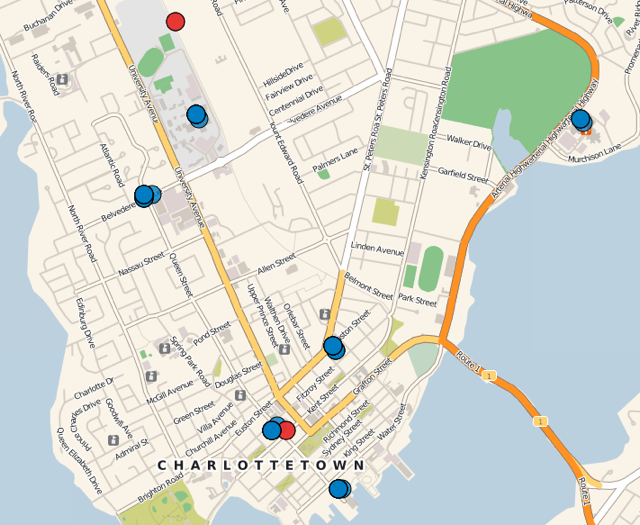
Attached to each tower or structure on this map are one or more “cells” and each cell had a unique identifiier made up of four parts:
- MCC: mobile country code; the code for Canada is 302
- MNC: mobile network code; every mobile operator has one: Bell is 610, Rogers is 720, for example.
- LAC: location area code; identifies the geographic region; in PEI our LAC is 48000
- Cell ID: a unique ID for each cell within an LAC.
Right now my phone is connected to Cell ID 250014558 in LAC 48000 in MNC 610 in MCC 302. I know this because I wrote a little Firefox OS application to display this information for me:
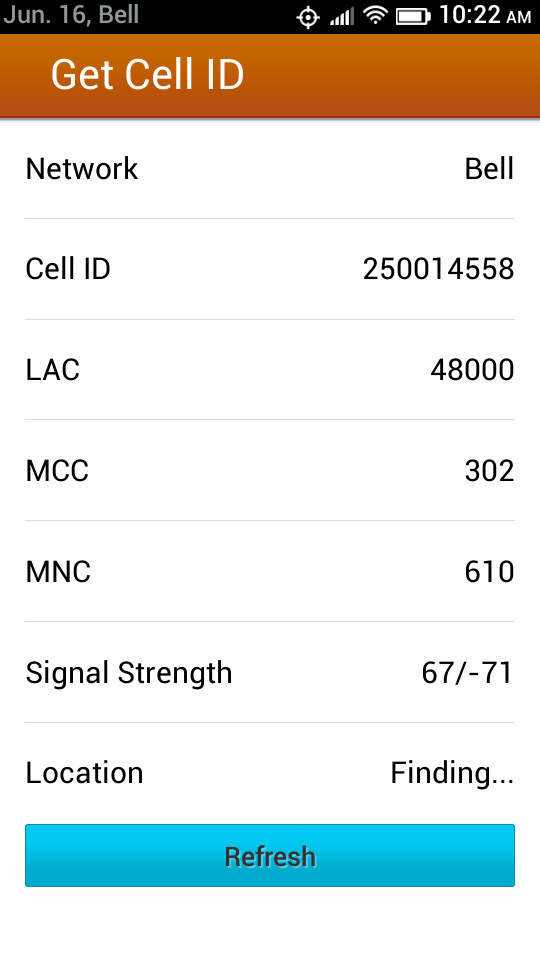
The “glue” that’s missing between information about cell transceiver sites (what you see on the map above, and is freely available from Industry Canada) and what I can detect on my mobile device (using the app above) is the Industry Canada data doesn’t include the “Cell ID” in its data, so there’s no way to know, from public data sources, where the cell I’m currently connected to is.
That’s where OpenCellID.org comes in: using the site’s API I can query the database for the location of a given Cell ID, like this (where I substitute my API key, available for free by registering, for “KEY”):
http://www.opencellid.org/cell/get?key=KEY&mnc=610&mcc=302&lac=48000&cellid=250014558
What gets returned is:
<rsp stat="ok">
<cell lac="48000"
mcc="302"
lat="46.2334785491667"
lon="-63.1262734316667"
cellId="250014558"
nbSamples="12"
mnc="610"
range="6000"/>
</rsp>
The location that OpenCellID.org returns is its best guess, from available reports, of my current location. As it turns out, it’s not a bad guess at all:
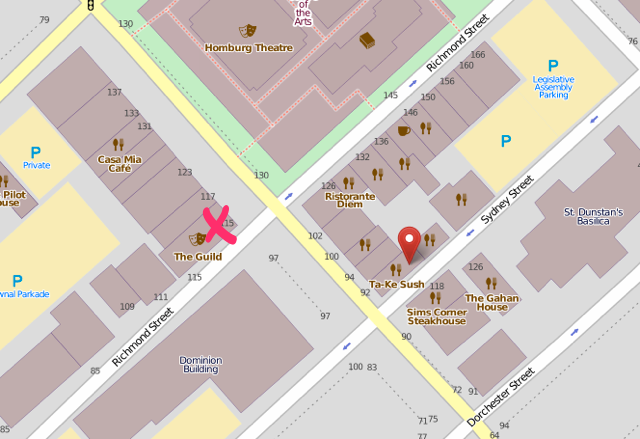
The pink X is my current location; the red marker is the location OpenCellID.org returned. The site build that guess using 12 reports (reports, as it happens, that I contributed using my device):
<rsp stat="ok">
<measure lat="46.2341142" lon="-63.12629745"></measure>
<measure lat="46.23423571" lon="-63.1264044"></measure>
<measure lat="46.2342632" lon="-63.12641408"></measure>
<measure lat="46.2342976" lon="-63.12642024"></measure>
<measure lat="46.23397183" lon="-63.12654337"></measure>
<measure lat="46.23369234" lon="-63.12707633"></measure>
<measure lat="46.23305379" lon="-63.12726862"></measure>
<measure lat="46.23359937" lon="-63.12701882"></measure>
<measure lat="46.23346142" lon="-63.1267446"></measure>
<measure lat="46.23268702" lon="-63.12559536"></measure>
<measure lat="46.23210112" lon="-63.12496772"></measure>
<measure lat="46.23226499" lon="-63.12453019"></measure>
</cell>
</rsp>
When you look at the locations of those 12 measures, it’s easy to see why OpenCellID.org returned the location it did:
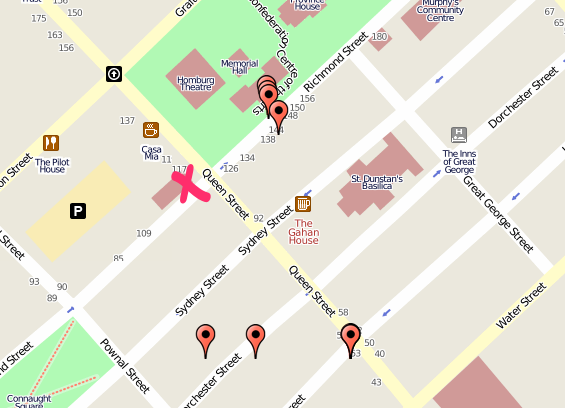
Obviously with more reports the accuracy of the “guess” will increase. I’m running my app (you can grab it for Firefox OS) when I’m walking around and about downtown Charlottetown, so this should happen on its own, as my app gets GPS location from the device and reports this to OpenCellID.org every 30 seconds.
 I am
I am